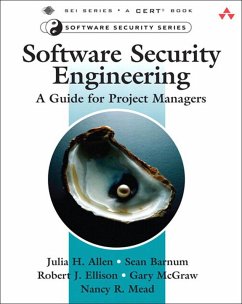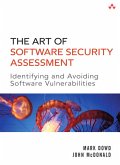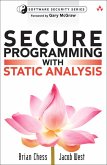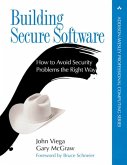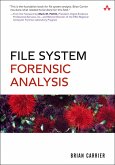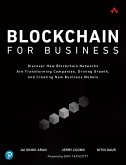"This book's broad overview can help an organization choose a set of processes, policies, and techniques that are appropriate for its security maturity, risk tolerance, and development style. This book will help you understand how to incorporate practical security techniques into all phases of the development lifecycle."
-Steve Riley, senior security strategist, Microsoft Corporation
"There are books written on some of the topics addressed in this book, and there are other books on secure systems engineering. Few address the entire life cycle with a comprehensive overview and discussion of emerging trends and topics as well as this one."
-Ronda Henning, senior scientist-software/security queen, Harris Corporation
Software that is developed from the beginning with security in mind will resist, tolerate, and recover from attacks more effectively than would otherwise be possible. While there may be no silver bullet for security, there are practices that project managers will find beneficial. With this management guide, you can select from a number of sound practices likely to increase the security and dependability of your software, both during its development and subsequently in its operation.
Software Security Engineering draws extensively on the systematic approach developed for the Build Security In (BSI) Web site. Sponsored by the Department of Homeland Security Software Assurance Program, the BSI site offers a host of tools, guidelines, rules, principles, and other resources to help project managers address security issues in every phase of the software development life cycle (SDLC). The book's expert authors, themselves frequent contributors to the BSI site, represent two well-known resources in the security world: the CERT Program at the Software Engineering Institute (SEI) and Cigital, Inc., a consulting firm specializing in software security.
This book will help you understand why
Chapter 1: Why Is Security a Software Issue? 1
1.1 Introduction 1
1.2 The Problem 2
1.3 Software Assurance and Software Security 6
1.4 Threats to Software Security 9
1.5 Sources of Software Insecurity 11
1.6 The Benefits of Detecting Software Security Defects Early 13
1.7 Managing Secure Software Development 18
1.8 Summary 23
Chapter 2: What Makes Software Secure? 25
2.1 Introduction 25
2.2 Defining Properties of Secure Software 26
2.3 How to Influence the Security Properties of Software 36
2.4 How to Assert and Specify Desired Security Properties 61
2.5 Summary 71
Chapter 3: Requirements Engineering for Secure Software 73
3.1 Introduction 73
3.2 Misuse and Abuse Cases 78
3.3 The SQUARE Process Model 84
3.4 SQUARE Sample Outputs 91
3.5 Requirements Elicitation 99
3.6 Requirements Prioritization 106
3.7 Summary 112
Chapter 4: Secure Software Architecture and Design 115
4.1 Introduction 115
4.2 Software Security Practices for Architecture and Design: Architectural Risk Analysis 119
4.3 Software Security Knowledge for Architecture and Design: Security Principles, Security Guidelines, and Attack Patterns 137
4.4 Summary 148
Chapter 5: Considerations for Secure Coding and Testing 151
5.1 Introduction 151
5.2 Code Analysis 152
5.3 Coding Practices 160
5.4 Software Security Testing 163
5.5 Security Testing Considerations Throughout the SDLC 173
5.6 Summary 180
Chapter 6: Security and Complexity: System Assembly Challenges 183
6.1 Introduction 183
6.2 Security Failures 186
6.3 Functional and Attacker Perspectives for Security Analysis: Two Examples 189
6.4 System Complexity Drivers and Security 203
6.5 Deep Technical Problem Complexity 215
6.6 Summary 217
Chapter 7: Governance, and Managing for More Secure Software 221
7.1 Introduction 221
7.2 Governance and Security 223
7.3 Adopting an Enterprise Software Security Framework 226
7.4 How Much Security Is Enough? 236
7.5 Security and Project Management 244
7.6 Maturity of Practice 259
7.7 Summary 266
Chapter 8: Getting Started 267
8.1 Where to Begin 269
8.2 In Closing 281
-Steve Riley, senior security strategist, Microsoft Corporation
"There are books written on some of the topics addressed in this book, and there are other books on secure systems engineering. Few address the entire life cycle with a comprehensive overview and discussion of emerging trends and topics as well as this one."
-Ronda Henning, senior scientist-software/security queen, Harris Corporation
Software that is developed from the beginning with security in mind will resist, tolerate, and recover from attacks more effectively than would otherwise be possible. While there may be no silver bullet for security, there are practices that project managers will find beneficial. With this management guide, you can select from a number of sound practices likely to increase the security and dependability of your software, both during its development and subsequently in its operation.
Software Security Engineering draws extensively on the systematic approach developed for the Build Security In (BSI) Web site. Sponsored by the Department of Homeland Security Software Assurance Program, the BSI site offers a host of tools, guidelines, rules, principles, and other resources to help project managers address security issues in every phase of the software development life cycle (SDLC). The book's expert authors, themselves frequent contributors to the BSI site, represent two well-known resources in the security world: the CERT Program at the Software Engineering Institute (SEI) and Cigital, Inc., a consulting firm specializing in software security.
This book will help you understand why
- Software security is about more than just eliminating vulnerabilities and conducting penetration tests
- Network security mechanisms and IT infrastructure security services do not sufficiently protect application software from security risks
- Software security initiatives should follow a risk-management approach to identify priorities and to define what is "good enough"-understanding that software security risks will change throughout the SDLC
- Project managers and software engineers need to learn to think like an attacker in order to address the range of functions that software should not do, and how software can better resist, tolerate, and recover when under attack
Chapter 1: Why Is Security a Software Issue? 1
1.1 Introduction 1
1.2 The Problem 2
1.3 Software Assurance and Software Security 6
1.4 Threats to Software Security 9
1.5 Sources of Software Insecurity 11
1.6 The Benefits of Detecting Software Security Defects Early 13
1.7 Managing Secure Software Development 18
1.8 Summary 23
Chapter 2: What Makes Software Secure? 25
2.1 Introduction 25
2.2 Defining Properties of Secure Software 26
2.3 How to Influence the Security Properties of Software 36
2.4 How to Assert and Specify Desired Security Properties 61
2.5 Summary 71
Chapter 3: Requirements Engineering for Secure Software 73
3.1 Introduction 73
3.2 Misuse and Abuse Cases 78
3.3 The SQUARE Process Model 84
3.4 SQUARE Sample Outputs 91
3.5 Requirements Elicitation 99
3.6 Requirements Prioritization 106
3.7 Summary 112
Chapter 4: Secure Software Architecture and Design 115
4.1 Introduction 115
4.2 Software Security Practices for Architecture and Design: Architectural Risk Analysis 119
4.3 Software Security Knowledge for Architecture and Design: Security Principles, Security Guidelines, and Attack Patterns 137
4.4 Summary 148
Chapter 5: Considerations for Secure Coding and Testing 151
5.1 Introduction 151
5.2 Code Analysis 152
5.3 Coding Practices 160
5.4 Software Security Testing 163
5.5 Security Testing Considerations Throughout the SDLC 173
5.6 Summary 180
Chapter 6: Security and Complexity: System Assembly Challenges 183
6.1 Introduction 183
6.2 Security Failures 186
6.3 Functional and Attacker Perspectives for Security Analysis: Two Examples 189
6.4 System Complexity Drivers and Security 203
6.5 Deep Technical Problem Complexity 215
6.6 Summary 217
Chapter 7: Governance, and Managing for More Secure Software 221
7.1 Introduction 221
7.2 Governance and Security 223
7.3 Adopting an Enterprise Software Security Framework 226
7.4 How Much Security Is Enough? 236
7.5 Security and Project Management 244
7.6 Maturity of Practice 259
7.7 Summary 266
Chapter 8: Getting Started 267
8.1 Where to Begin 269
8.2 In Closing 281
Dieser Download kann aus rechtlichen Gründen nur mit Rechnungsadresse in A, B, BG, CY, CZ, D, DK, EW, E, FIN, F, GR, HR, H, IRL, I, LT, L, LR, M, NL, PL, P, R, S, SLO, SK ausgeliefert werden.

